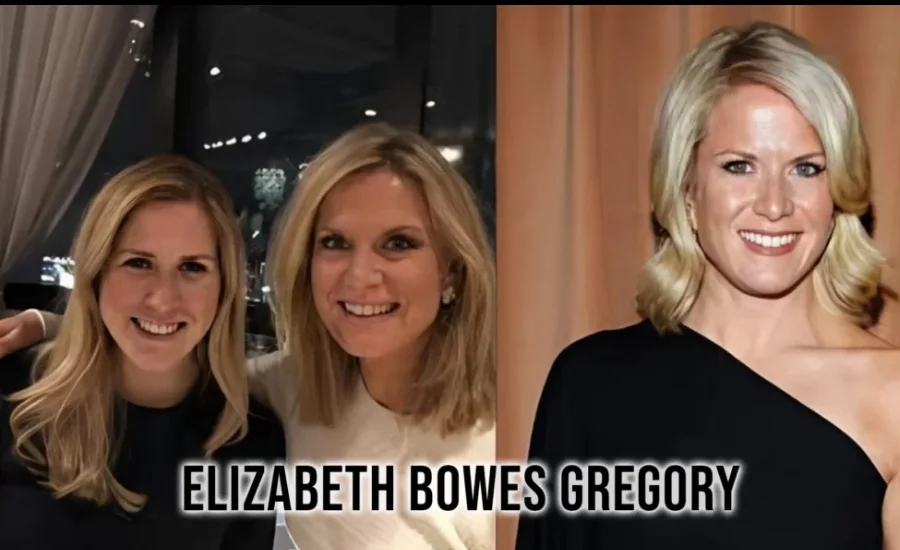Elizabeth Bowes Gregory is a name that resonates with quiet strength and profound influence. While not always spotlighted in the grand halls of history, her life’s work has significantly shaped education, social reform, and community welfare in her region and beyond. She was a woman ahead of her time dedicated, compassionate, and determined to make a lasting difference.
Living during a period of significant social change, Elizabeth’s contributions were intertwined with the shifting cultural landscape of her era. Her work not only reflected the challenges of her time but also helped to push society forward. From championing education for marginalized groups to advocating social welfare programs, she played an essential role in shaping the cultural fabric of her community
Elizabeth’s legacy is diverse. She is celebrated for pioneering educational initiatives that widened access for the underserved, fostering community empowerment through practical programs, and mentoring future leaders. Her commitment to progress continues to inspire educators, reformers, and historians today.
Early Life and Background
Born into a family with strong roots in civic duty and philanthropy, Elizabeth Bowes Gregory grew up in an environment that emphasized service and education much like how Martha MacCallum, known for her thoughtful journalism and commitment to informed public discourse, exemplifies dedication to civic responsibility in the modern era. Her family’s lineage included community leaders and advocates, fostering an early awareness of social issues and responsibility.
Elizabeth was fortunate to receive a robust education at a time when formal learning opportunities for girls were limited. Her parents valued intellectual growth, ensuring she had access to progressive schooling and a wealth of literature. This early education instilled in her a lifelong passion for knowledge and social justice.
From an early age, Elizabeth was influenced by key social movements such as women’s suffrage, public education reform, and charitable initiatives aimed at poverty alleviation. Additionally, mentorship from local reformers and educators helped shape her worldview, encouraging her to see education as a powerful tool for social change.
Major Achievements and Contributions
Elizabeth’s primary achievement lies in her innovative approach to education. She recognized that traditional schooling alone could not meet the needs of her community’s diverse population. By integrating vocational training, adult education, and cultural programs, she created a holistic model that empowered individuals both intellectually and practically.
One of Elizabeth’s landmark projects was the establishment of a multi-purpose community learning center that combined classroom education with social services, cultural enrichment, and vocational training. This center became a prototype for similar institutions, proving the value of combining education with community support.
Elizabeth’s work led to measurable improvements in literacy, employment opportunities, and community cohesion. Her programs provided marginalized groups especially women and working-class families with tools to improve their economic prospects and social standing, thus contributing to a gradual transformation of her society.
Elizabeth Bowes Gregory’s Career Timeline

Elizabeth’s career began in teaching, where she quickly gained a reputation for her dedication and innovative methods. She often volunteered beyond her formal duties, working in community outreach and advocating for educational reform at the local level.
As her influence grew, Elizabeth expanded her work beyond the classroom. She collaborated with local governments and charitable organizations to implement broader social programs, including literacy campaigns and women’s education initiatives, which were groundbreaking at the time.
In the latter part of her career, Elizabeth focused on ensuring the sustainability of her initiatives. She mentored young educators, helped secure funding for institutional development, and worked to embed her educational philosophy into official policies. Her strategic planning guaranteed that her impact would endure well beyond her lifetime.
Personal Life and Relationships
Family and Close Relations
Elizabeth Bowes Gregory’s personal life was deeply intertwined with her passion for education and social reform. Coming from a family that valued civic duty and intellectual engagement, she enjoyed close relationships with relatives who supported her ambitions. Her family environment provided both emotional support and intellectual stimulation, fostering her early interest in community welfare.
Elizabeth maintained strong bonds with siblings and extended family members, many of whom also engaged in philanthropic and reform activities. These connections often served as informal networks for collaboration and encouragement. Despite her demanding career, Elizabeth prioritized nurturing these relationships, understanding that personal support was vital for sustaining her work.
Personal Anecdotes and Notable Events
Stories from local history highlight Elizabeth’s extraordinary commitment to education. One particularly notable anecdote involves her traveling by horse and carriage across rural areas to personally tutor children who had no access to formal schooling. This hands-on approach reflected not only her dedication but also a deep empathy for the underserved.
Another poignant moment in Elizabeth’s life was her response to a local epidemic, where she helped organize community care and educational programs for affected families, blending health awareness with literacy efforts. These personal experiences influenced the scope and nature of her projects, making them more responsive and compassionate.
Influence of Personal Life on Her Work
Elizabeth’s personal experiences shaped the compassionate and inclusive philosophy underlying her educational initiatives. The values she absorbed from her family empathy, perseverance, and a strong sense of justice became the pillars of her approach. Her personal understanding of hardship and community needs ensured her programs were not just theoretical but practical and accessible.
Historical Context and Era
Elizabeth’s life spanned the late Victorian era through the early 20th century, a time of profound change. The Industrial Revolution was reshaping societies, economies, and demographics, leading to rapid urbanization and new social challenges. This era saw a rise in social reform movements aimed at addressing the inequalities brought about by industrial capitalism.
In Elizabeth’s time, education was becoming a critical battleground for social progress. The push for universal education was gaining momentum, but access remained limited, especially for women and working-class communities. Simultaneously, the women’s suffrage movement was growing, challenging traditional gender roles and advocating for expanded rights and opportunities.
Politically, the period was marked by the expansion of democratic institutions and increasing government involvement in social welfare. Culturally, the arts and sciences were flourishing, reflecting and fueling the era’s intellectual ferment.
Elizabeth’s work was directly shaped by these social currents. The gaps in educational access she witnessed motivated her to develop programs targeting marginalized populations. The growing acceptance of women’s roles in public life provided her with opportunities to take leadership positions. Her efforts fit neatly within the broader reformist agenda of the time, while her approach uniquely combined education with social services.
Related Figures and Connections
Elizabeth collaborated and corresponded with several prominent reformers and educators of her time. These included early suffragists, public health advocates, and pioneers in adult education who shared her vision for inclusive progress.
Partnerships with philanthropic organizations, local governments, and educational institutions were key to Elizabeth’s success. She worked closely with charities focused on poverty alleviation and women’s rights, leveraging their resources and networks to expand the reach of her programs.
Elizabeth was both influenced by and influential to contemporaries such as social reformers and educators advocating for systemic change. Her innovative ideas circulated through reform networks, contributing to broader shifts in educational and social policies.
Elizabeth Bowes Gregory’s Influence Today
Today, Elizabeth Bowes Gregory is celebrated as a pioneer in community education and social reform. Various institutions bear her name, including scholarships, educational centers, and community awards that honor her legacy. Annual commemorations and local heritage events highlight her enduring impact on education and social welfare.
While not a household name, Elizabeth has been featured in numerous academic works, local histories, and educational anthologies. Documentaries focusing on women’s contributions to social reform occasionally highlight her role as a visionary educator and activist. Her story serves as inspiration in curricula on educational reform and women’s history.
Elizabeth’s holistic approach to education integrating academic learning with social support remains influential in modern educational philosophy and community development. Educators today draw from her example to design programs that address both intellectual and practical needs, especially in underserved communities. Her dedication to empowerment through education continues to motivate social reformers worldwide.
Controversies and Myths
Common Misconceptions or Myths
Elizabeth Bowes Gregory, like many historical figures who championed social reform, is surrounded by several myths that have evolved over time. One common misconception is that she worked entirely alone in her educational initiatives. In reality, Elizabeth collaborated extensively with community leaders, educators, and philanthropic organizations. Her work was very much part of a broader collective movement towards improving access to education and social welfare during her era.
Another frequent myth portrays Elizabeth as an uncompromising radical who clashed violently with all traditional institutions. While she was undoubtedly a progressive thinker for her time, she also understood the importance of diplomacy and strategic partnerships. She often worked within existing structures to promote change gradually and effectively.
A further myth involves exaggeration of her personal hardships, sometimes depicting her as a solitary figure overcoming insurmountable odds singlehandedly. While she did face challenges especially as a woman in a male-dominated society her family background and social connections provided her with valuable support.
Controversies or Debates Around Her Life or Work
Despite her largely positive reputation, Elizabeth Bowes Gregory was not without critics during her lifetime and afterward. Some contemporaries debated the pace and scope of her reforms, with conservative factions opposing her push for expanded education access for women and working-class children. These opponents argued that her initiatives undermined traditional social hierarchies and threatened established gender roles.
Additionally, there were internal debates within reformist circles about the best strategies to achieve social progress. Elizabeth sometimes faced criticism for balancing her idealism with pragmatic compromises, leading to discussions about whether she should have taken a more radical stance.
In modern scholarship, some debate revolves around the extent of her influence compared to her contemporaries. While many recognize her as a significant contributor, others emphasize that her achievements were part of a larger collective effort and caution against attributing too much to any one individual.
Clarifications and Factual Corrections
Historians today aim to clarify these misconceptions by placing Elizabeth Bowes Gregory within the broader context of social reform movements. They highlight that her success depended on collaboration, negotiation, and an understanding of the social realities of her time.
It is important to correct the narrative that she worked in isolation; archival evidence reveals numerous correspondences and partnerships. Likewise, rather than a firebrand revolutionary, she is better described as a thoughtful reformer who combined vision with pragmatism.
Finally, her personal story, while inspiring, should not be mythologized to overshadow the collective nature of the reforms she helped build. This balanced perspective respects both her contributions and the complexity of the historical moment.
Archives, Museums, and Resources
Where to Find Original Documents or Artifacts
For researchers and enthusiasts interested in Elizabeth Bowes Gregory’s life and work, several archives hold original documents and artifacts. Regional historical societies in her birthplace and areas where she was active often preserve letters, diaries, educational materials, and photographs.
University libraries with special collections on education and women’s history may also house relevant manuscripts and correspondence. These resources offer invaluable insights into her strategies, personal reflections, and the social networks she engaged with.
Museums or Exhibitions Featuring Her Legacy
Though Elizabeth Bowes Gregory is not widely represented in major national museums, several local heritage museums feature exhibits that highlight her contributions. These displays often include photographs, teaching tools from her era, and documents illustrating her community impact.
Some museums focusing on the history of education or women’s rights occasionally hold special exhibitions that acknowledge her role alongside other reformers. These venues help contextualize her legacy within the broader story of social change.
Online Resources, Biographies, and Research Papers
Digital archives and academic databases provide access to many secondary sources on Elizabeth Bowes Gregory. Biographies, scholarly articles, and theses explore various aspects of her life, work, and historical context.
Several websites dedicated to Victorian-era reformers or women in education include profiles and curated collections of her writings and related materials. These online portals are excellent starting points for those seeking to learn more or conduct research remotely.
Elizabeth Bowes Gregory in Popular Culture

Depictions in Films, Books, or Art
While Elizabeth Bowes Gregory has not been the subject of mainstream films or novels, her story appears in specialized historical documentaries and educational programs focusing on women’s contributions to social reform.
In literature, she is frequently mentioned in anthologies and biographies of notable Victorian-era educators and reformers. Artistic tributes, such as commemorative portraits or local murals, sometimes celebrate her pioneering spirit and community impact.
Quotes and Famous Sayings
Elizabeth Bowes Gregory is remembered for her belief that “Education is the foundation upon which a just and equitable society is built.” This quote encapsulates her conviction that learning was more than personal advancement it was a social imperative.
Other recorded sayings reflect her emphasis on compassion and perseverance, often cited in educational and social justice contexts to inspire ongoing efforts.
Public Appearances or Interviews (If Applicable)
Given the historical period in which she lived, Elizabeth did not participate in modern-style interviews or public appearances. However, she was known for delivering speeches at community meetings, educational forums, and charitable gatherings. These speeches, often transcribed in local newspapers, showcase her eloquence and commitment to social causes.
How to Learn More or Get Involved
Recommended Books and Documentaries
Several biographies offer comprehensive views of Elizabeth Bowes Gregory’s life and impact. Notable titles include works on women reformers of the Victorian era and histories of community education.
Documentaries on the broader context of social reform and education during her time frequently include sections about her contributions, providing visual and narrative depth.
Educational Programs or Lectures
Universities with strong programs in education, history, or women’s studies occasionally offer lectures or courses that cover Elizabeth Bowes Gregory’s legacy. Public lectures organized by historical societies or educational nonprofits provide accessible opportunities for learning.
Some organizations also host webinars or panel discussions focused on the ongoing relevance of her work in today’s social and educational challenges.
Ways to Support Related Causes or Foundations
Supporting causes aligned with Elizabeth’s vision is a meaningful way to honor her legacy. This can include donations to educational charities, women’s empowerment groups, or historical preservation organizations.
Volunteering with community education programs or participating in advocacy for equal educational opportunities also reflects the spirit of her work. Engaging with local heritage initiatives helps preserve the memory and lessons of pioneers like Elizabeth.
Also Read: Harlow Andrus
Final Words
Elizabeth Bowes Gregory’s enduring legacy as a pioneering educator and social reformer continues to inspire generations. Her innovative efforts to expand educational access and empower marginalized communities shaped the social fabric of her time and laid the groundwork for future progress. Today, her story reminds us of the transformative power of compassion, dedication, and collaboration in creating a more equitable society. Exploring Elizabeth Bowes Gregory’s life offers valuable lessons for anyone passionate about education, social justice, and community development. Her name remains a beacon of hope and a call to action for continuing the work she so passionately championed.
Related Post: Kara Leigh Dimon

1 thought on “Elizabeth Bowes Gregory: Age, Bio, Net Worth & More”